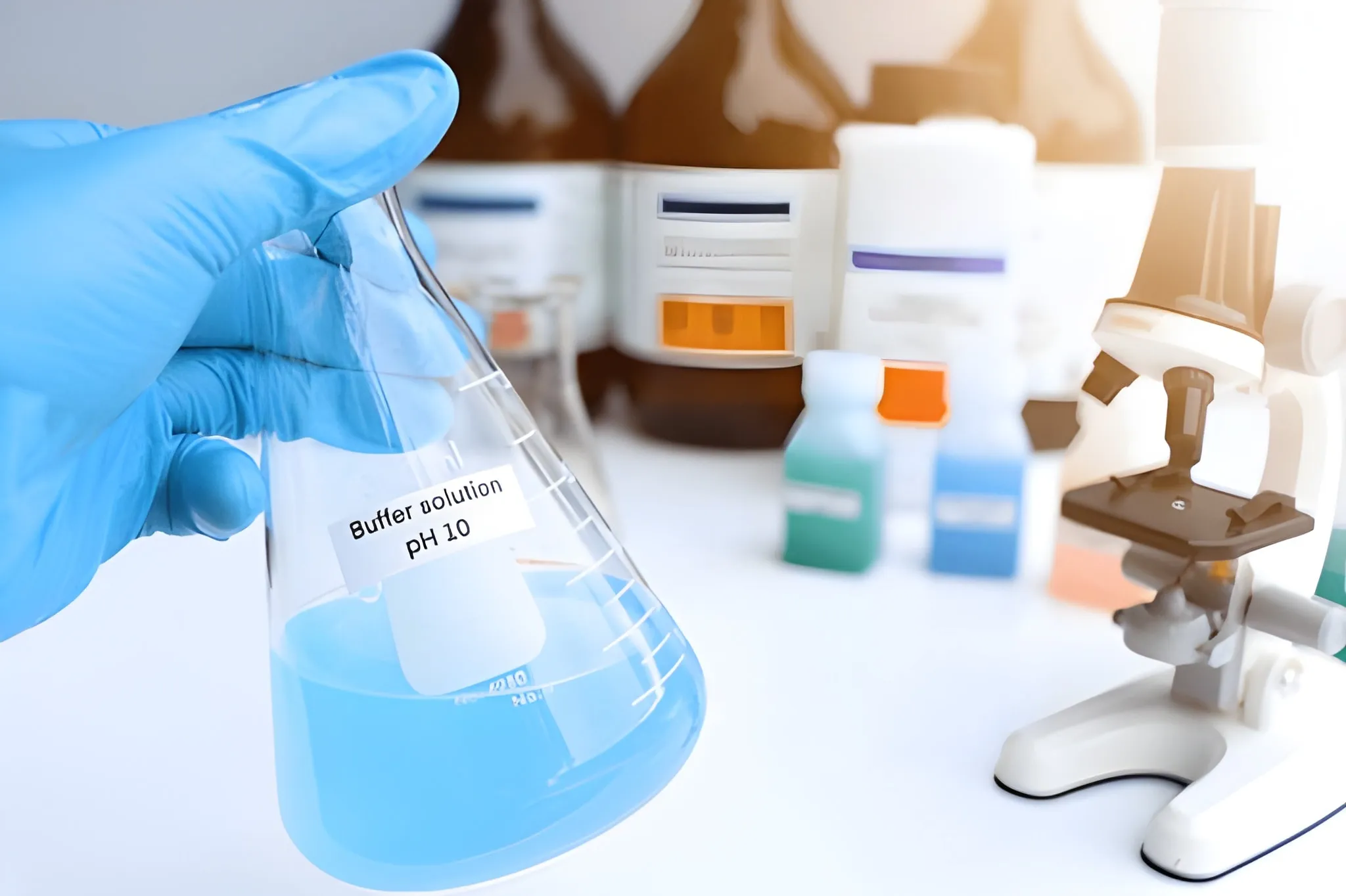This blog explains how pH buffers and calibration solutions ensure accurate lab results.
Accuracy is the backbone of every scientific experiment. Even the smallest measurement error can lead to flawed conclusions or the waste of resources. One of the simplest yet most powerful tools for achieving reliable results is the laboratory pH buffer. These solutions help scientists maintain consistent pH levels, calibrate instruments, and prevent deviations that could compromise research. By maintaining steady measurements, pH buffer solutions ensure that scientific findings are trustworthy and reproducible.
What is a pH Buffer?
A pH buffer solution is a mixture that helps keep the pH level stable, even when small amounts of acid or base are added. It ensures consistent pH readings, which is important for reliable scientific research. Without buffers, results would be unpredictable.
These solutions are essential whenever researchers need to maintain a specific pH level or calibrate their instruments. A pH calibration solution helps adjust pH meters and electrodes to ensure they give accurate readings over time.
Why pH Buffers Are Essential in Research
Reliable pH readings are vital in industries such as pharmaceuticals, water testing, food production, and biotechnology. Even a small shift in pH can disrupt chemical reactions, alter protein structures, or affect enzyme activity.
Laboratory pH buffers serve as trusted reference points. Certified solutions, typically ranging from pH 4.01 to 10.01, cover the most common experimental requirements and ensure accuracy worldwide.
Types of Laboratory pH Buffers
Different applications require different buffer types:
- Primary standard buffers – Offer the highest accuracy and traceability to international standards. Used when precision is essential.
- Secondary standard buffers – Cost-effective and accurate, perfect for routine calibration and quality control tasks.
- Specialized pH buffers – Designed for challenging conditions such as high temperatures, low ionic strength, or biological samples.
Each type supports accuracy in different research settings, ensuring results remain stable and reliable.
The Role of Calibration
Regular calibration is crucial to ensure that instruments measure pH accurately. Calibration involves adjusting a pH meter with a solution of known pH to account for electrode drift, wear, and environmental influences.
Most labs use at least two buffers for multi-point calibration to ensure accurate pH measurements across the entire range.
- Critical applications may require daily calibration.
- Routine tasks may need weekly calibration.
Step-by-step calibration process:
- Rinse the pH electrode using distilled water to avoid contamination.
- Place it in the first buffer solution and adjust the meter to match its certified pH value.
- Rinse again, then dip in a second buffer solution to ensure accuracy throughout the range.
- If needed, repeat with a third buffer to fine-tune measurements.
This process ensures every reading is consistent and dependable.
Quality Assurance and Compliance
Modern laboratory pH buffers are manufactured under strict quality standards. They come with certificates of analysis showing exact pH values, uncertainty, and stability data. This ensures laboratories meet industry regulations and maintain traceability.
It’s important to have accurate documentation in the pharmaceutical, environmental, and food industries to meet regulatory requirements.
Best Practices for Using pH Buffers
Proper handling ensures the reliability of pH buffer solutions.
- Store correctly – Keep buffers at recommended temperatures to prevent degradation.
- Avoid contamination – Use clean containers and rinse electrodes thoroughly between tests.
- Watch temperature – pH varies with temperature; many modern buffers include temperature compensation data.
- Replace when needed – Do not use expired or discolored buffers, as they can affect the accuracy of readings.
These simple steps ensure that buffers always perform optimally.
Economic Benefits of Reliable pH Measurement
Using quality pH buffers is a smart investment. They are inexpensive compared to the costs of failed experiments or production problems.
For example, a pharmaceutical company could lose thousands if a batch fails quality testing due to incorrect pH levels. In industrial water treatment, inaccurate calibration can waste chemicals or result in fines. Using accurate pH calibration solutions helps prevent these issues and enhances process efficiency and product quality.
Future of pH Buffer Technology
Innovations in buffer technology are improving accuracy and ease of use. Some new developments include:
- Smart buffers with built-in sensors for real-time monitoring
- Longer shelf-life formulations for less frequent replacement
- Specialized eco-friendly buffers for emerging scientific applications
These advancements make pH measurement even more reliable, supporting the increasing precision demands of modern research.
Laboratory pH buffers are important tools that help keep pH levels stable and instruments calibrated, so researchers can rely on their data.
Whether in basic research or industrial applications, pH buffer solutions and pH calibration solutions form the foundation of dependable measurements. They reduce errors, maintain compliance, protect resources, and ultimately uphold scientific credibility.
For laboratories seeking high-quality buffers, Lab Chemicals offers products designed to meet international standards. Investing in the right solutions ensures that every experiment, every test, and every result is accurate, consistent, and ready to withstand scrutiny.
